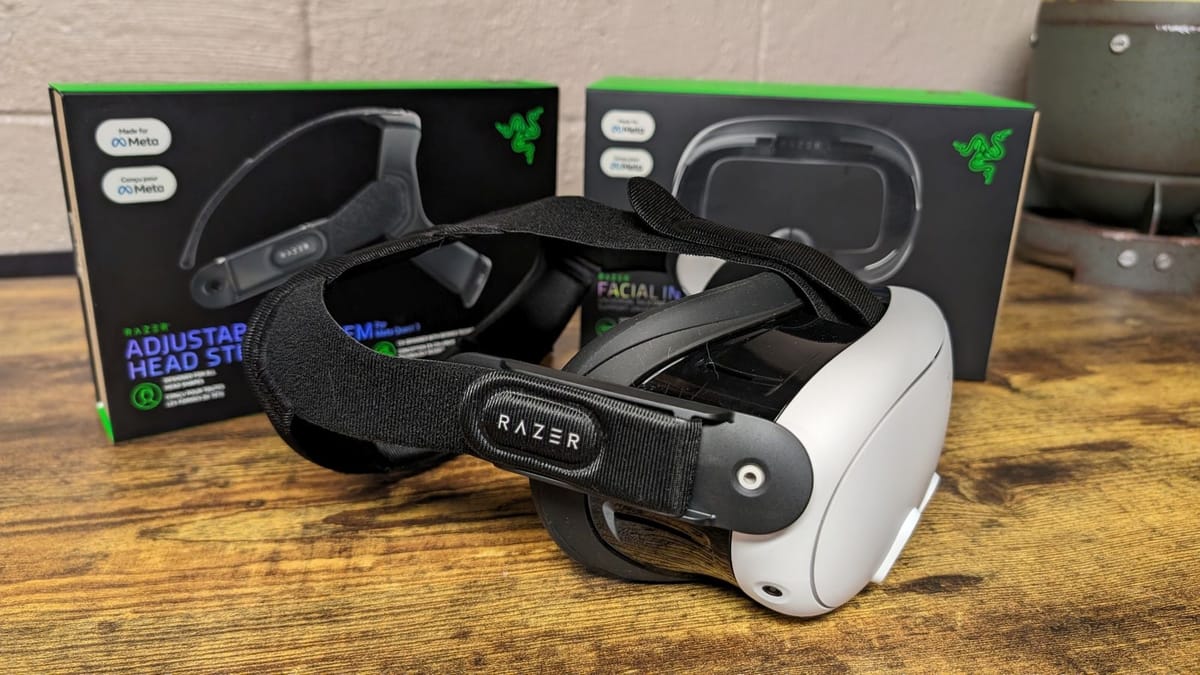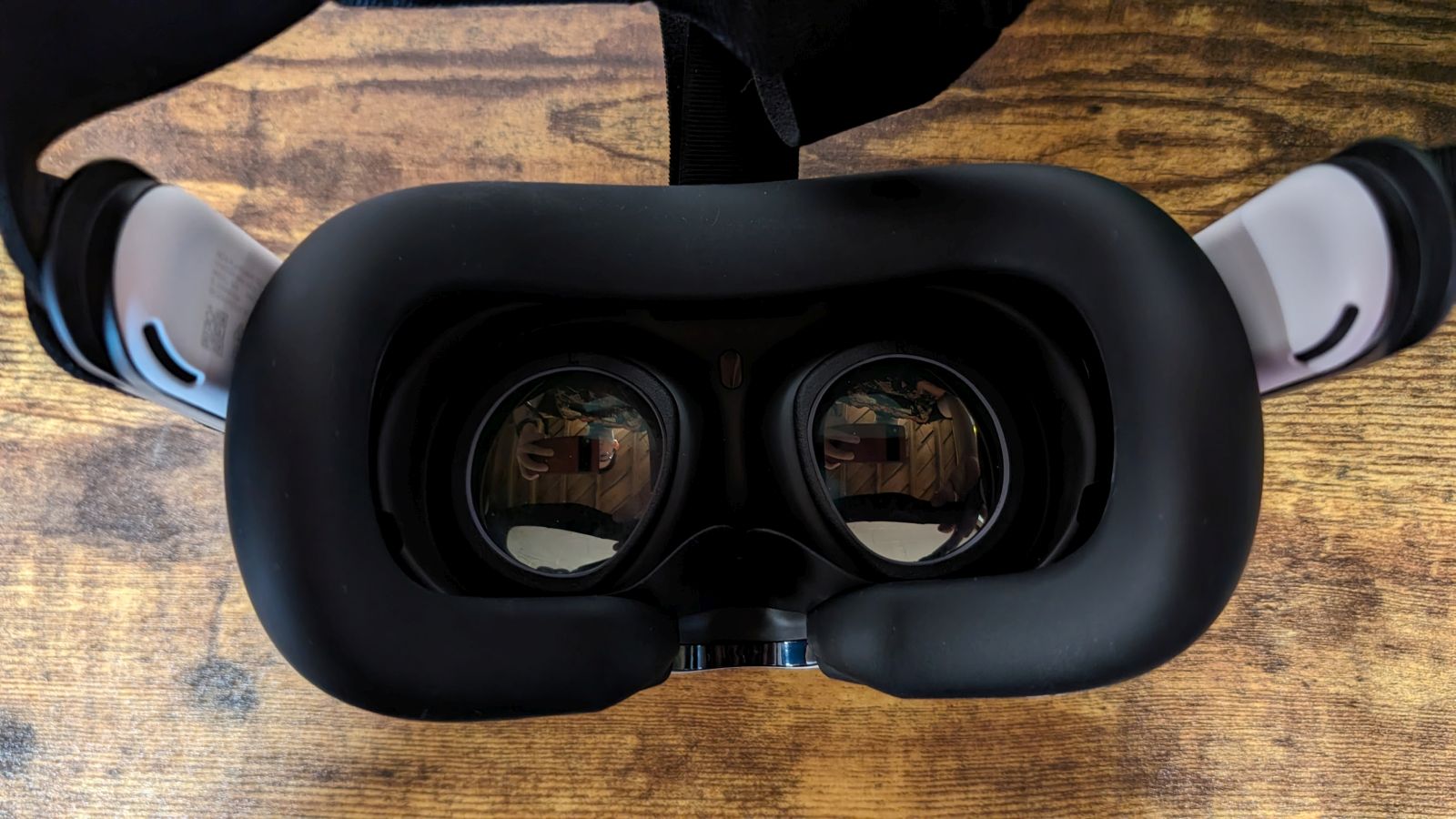
Let me be frank, you shouldn’t be using the strap that came with the Meta Quest 3. As much as I love my Quest 3 headset, it’s obvious the team at Meta has cut costs with an at best sad head strap. Razer wants to give you a singular option, and not only for the strap, but the facial interface as well. Have they succeeded?
The head strap and facial interface come in two separate boxes, with the usual Razer flair to them. One thing to note, once the sleeve is off, the cardboard boxes resemble the packaging for a Quest 3, which is a nice touch. Inside, you’ll find both items securely packaged and ready to be a part of your VR headset.
Neither look like much, although I guess that’s more given these are subtle accessories, nothing that will grab the eye. I’m almost surprised Razer didn’t find a way to RGB the strap, as that would certainly be a selling point. It still looks sleek though, even if I feel like a bit of a Razer advertisement with a logo on both sides and the back of my head. The head strap is made of a nice nylon, and feels well made as well as sturdy. You’ll also find it to have a cushion like nature – something missing from the standard Quest 3 strap.
The facial interface is something not many think about because you’ll rarely remove it unless you have glasses (to put in the extender). This piece is what attaches to the headset and is up against your face, so it’s important to be done correctly. Razer’s design choice was to bring in a rubber-like membrane for the part touching your face, and it’s medical-grade so as to not irritate your skin. It also feels well made, something that’s going to hold up as you put it through the normal abuse a VR headset will go through.
Installing both of these accessories is incredibly simple. Just remove the stock parts and add the Razer ones. The facial interface clicked nicely in place, and the head strap was surprisingly easy to install, especially the strap that attaches to the top of the headset. I’ve had struggles fitting other straps through the small opening and pushing them up through it, so this being a quick task was great.
Once attached it was time to try everything out. The head strap fit very quickly into place on my head, sliding to where it needed to be. While I think it secures everything better than the original strap, there’s still something off to me. I’m used to a battery strap that can be tightened via an adjustment dial (which this lacks), so there’s probably a looseness that doesn’t seem right with Razers. It is comfy though, and I can easily wear this for longer VR sessions.

I’m impressed with the facial interface accessory compared to the stock Quest 3 one. I think I still prefer the fabric of the stock part, but the membrane is much more comfy than I expected. Whether or not it will hold up well to a sweaty VR workout is to be seen, but at least it wouldn’t soak up said sweat (ew). Another benefit to Razer’s design is the light blocking aspect. This is pretty terrible on Meta’s stock facial interface, with my being able to more or less use my phone while barely raising the headset just by looking directly down. Here, plenty of work has gone into using the membrane correctly and crafting vents around the nose. It’s almost perfectly done, with only rare moments of seeing the outside world through a vent.
I usually don’t discuss price on items we review, but here it seems a bit necessary. That’s because the Razer Adjustable VR Head Strap System and Facial Interface for Meta Quest 3 will set you back, as a set, $140. That’s astronomical in my opinion – seventy dollars for each accessory. I firmly believe that this is better than the original strap and facial interface, but that much money seems exorbitant. Meta’s own Elite Strap costs the same amount as Razer’s head strap, and it includes the adjustment dial to tighten things to the user’s head. While the facial interface doesn’t have almost any competition (and what I’ve seen doesn’t inspire me with the same confidence Razer’s has), the strap does, which makes it a tougher sell.
Razer Adjustable VR Head Strap System
Good
Razer’s offering of Meta Quest 3 gear is a bit mixed for me. The head strap is alright, but is a bit basic compared to others on the market. The facial interface however is a nice addition, answering several VR conundrums I didn’t know I had until using it. Both can be solid add-ons for your VR experience, but only if you’re willing to take the hit to your wallet they’ll cost.
Pros
- Sturdy and comfy nylon strap
- Facial interface blocks out light extremely well
- Super easy to add to your headset
Cons
- Something feels off with the strap
- Quite pricey
